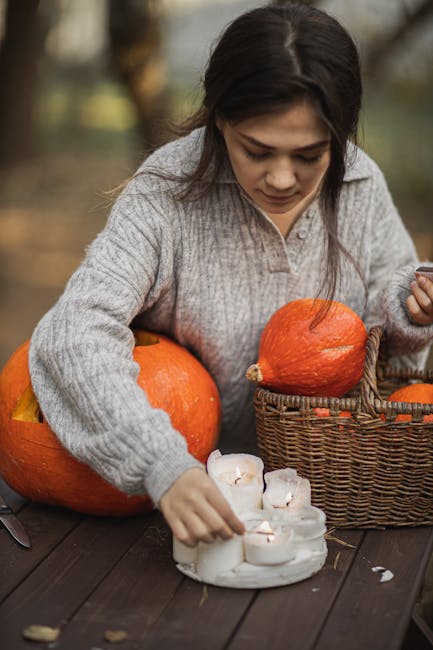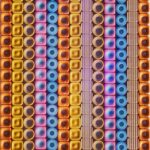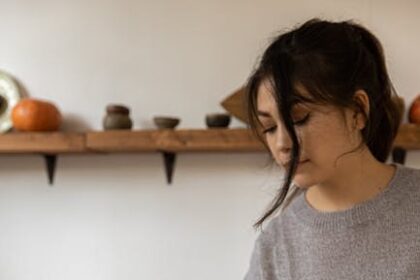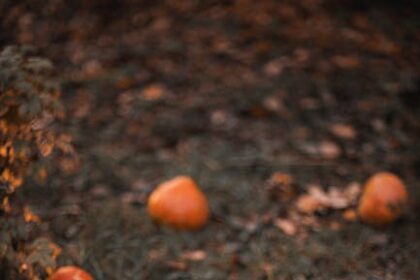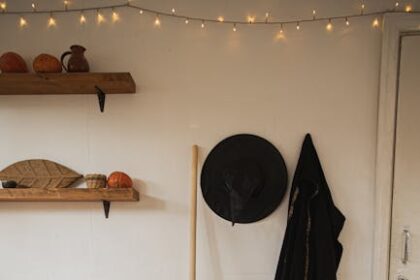Mastering A/B testing for TikTok Ads represents the apex of data-driven advertising, transforming campaigns from speculative ventures into precision-engineered growth engines. In the dynamic, fast-paced environment of TikTok, where trends emerge and fade with dizzying speed, the ability to systematically test and optimize every element of your ad strategy is not merely an advantage; it is a fundamental necessity for achieving sustainable, profitable results. This comprehensive guide delves into the intricate world of A/B testing specifically tailored for the TikTok advertising ecosystem, offering actionable insights and detailed methodologies to elevate your ad performance.
The essence of A/B testing, often referred to as split testing, involves comparing two versions of an ad, ad group, or campaign element to determine which performs better against a specific objective. For TikTok advertisers, this translates into identifying the most impactful creative, the most receptive audience, the most effective bidding strategy, and the most compelling call to action. Unlike traditional marketing, TikTok’s unique algorithm and user behavior demand a nuanced approach to testing. The short-form video format, sound-on environment, and highly engaged, discoverability-driven audience necessitate a deep understanding of what resonates and converts. Without rigorous A/B testing, advertisers are merely guessing, leaving significant potential for wasted ad spend and missed opportunities on the table.
One of the primary reasons A/B testing is indispensable on TikTok is the platform’s highly visual and audial nature. A single element, such as a different video hook, a new piece of background music, or a subtle change in on-screen text, can drastically alter an ad’s performance. The organic virality mechanism, combined with TikTok’s sophisticated recommendation algorithm, means that ads that quickly capture attention and maintain engagement are heavily favored. A/B testing allows advertisers to systematically identify these winning elements, thereby improving metrics like click-through rate (CTR), conversion rate (CVR), and ultimately, return on ad spend (ROAS).
A core principle of effective A/B testing is the isolation of variables. To accurately attribute performance differences, you must test only one variable at a time. If you alter the video creative and the ad copy simultaneously, and one variant outperforms the other, you won’t know which specific change drove the improvement. This scientific approach ensures that your insights are precise and actionable. For instance, if you’re testing two different video hooks, ensure everything else – the body of the video, the ad copy, the audience targeting, the bidding strategy, and the budget – remains identical for both variants. This meticulous control is crucial for drawing valid conclusions and building a reliable foundation for future optimizations.
Another critical consideration for TikTok A/B testing is statistical significance. It’s not enough for one variant to merely outperform another; the difference must be statistically significant, meaning it’s unlikely to have occurred by chance. Relying on insufficient data or concluding a test too early can lead to false positives and costly mistakes. Tools and calculators for statistical significance help determine the necessary sample size (number of impressions or conversions) and the confidence level needed to declare a winner. Understanding concepts like p-value and confidence intervals ensures that your decisions are based on robust data, not mere anecdotal observations. A common pitfall for new advertisers is to stop a test as soon as one variant shows a slight lead, often leading to erroneous conclusions. Patience and adherence to statistical rigor are paramount.
Setting up your A/B test environment on TikTok involves leveraging the platform’s native tools and employing smart manual duplication strategies. TikTok Ads Manager offers a built-in “A/B Test” feature at the ad group level, allowing advertisers to compare two different ad groups with varying settings, such as creative, audience, or optimization goals. This feature automates the split of traffic and budget, simplifying the testing process. However, for more granular creative testing or when comparing multiple ad creatives within the same ad group, manual duplication of ads is often necessary. When manually duplicating, it’s vital to ensure an even budget distribution to prevent one variant from receiving disproportionate exposure. Clear naming conventions for campaigns, ad groups, and ads are also essential for organization and accurate tracking, for example, “Campaign_ProductX_ABTest_CreativeHookA” vs. “Campaign_ProductX_ABTest_CreativeHookB.”
The scope of what can be A/B tested on TikTok is vast, encompassing every element of the ad funnel.
Creative Elements: These are often the most impactful variables on TikTok due to the platform’s visual-first nature.
- Video Hooks (First 3 Seconds): The initial seconds of a TikTok ad are paramount for stopping the scroll. Test different opening scenes, text overlays, sound bites, or rapid-fire cuts. Hypothesis: If we start the video with a direct problem statement relevant to the audience, the CTR will increase because it immediately captures attention and establishes relevance.
- Video Content/Angles: Experiment with diverse storytelling approaches.
- User-Generated Content (UGC) vs. Studio-Produced: Authenticity often trumps polished production on TikTok. Hypothesis: UGC-style ads will outperform studio-produced ads for younger audiences, as they perceive them as more genuine and relatable, leading to higher conversion rates.
- Problem-Solution Format: Present a common pain point and offer your product as the solution.
- Demonstration Videos: Show your product in action.
- Testimonials/Reviews: Leverage social proof.
- Trend-Based Content: Adapt popular TikTok trends to your brand. Hypothesis: Incorporating a trending sound or dance will increase video view duration and shares among trend-conscious users, driving greater brand awareness.
- Video Lengths: While TikTok is known for short videos, some products might benefit from slightly longer, more detailed explanations. Test 15-second vs. 30-second vs. 60-second versions. Hypothesis: Shorter video ads (15 seconds) will have a higher completion rate and lower CPC for awareness campaigns due to their quick digestibility.
- Text Overlays/Captions within Video: On-screen text can reinforce messaging or provide context, especially for sound-off viewers. Test different font styles, colors, positions, and messaging within the video itself. Hypothesis: Adding a bold, benefit-driven text overlay in the first five seconds of the video will improve CTR by immediately communicating value.
- Music/Sound Effects: Sound is a crucial component of TikTok. Test popular trending sounds versus custom audio or voiceovers. Hypothesis: Using a currently trending sound will increase ad recall and engagement metrics like shares, as users are more likely to interact with familiar audio.
- Call-to-Action (CTA) within Video: Explicitly tell users what to do, either verbally or with on-screen text. Test different phrasing or placement. Hypothesis: An animated text overlay stating “Tap to Shop!” towards the end of the video will drive more clicks than a static text CTA, due to its dynamic nature.
- Thumbnail/Cover Image: While videos auto-play, the initial impression can still be influenced by a compelling thumbnail if the video pauses or is previewed. Hypothesis: A cover image featuring a smiling face will result in a higher initial engagement rate compared to a product-only image, due to human connection.
Ad Copy: The text accompanying your video plays a vital role in providing context and driving action.
- Headlines/Primary Text Variations: Experiment with different value propositions, urgency, or question-based headlines. TikTok’s character limit for primary text is 2,200 characters, but shorter, punchier copy often performs better. Hypothesis: A primary text that uses an emoji list to highlight benefits will lead to a higher conversion rate than plain text, as it’s easier to digest quickly.
- Emoji Usage: Test the strategic inclusion of emojis to break up text and convey emotion. Hypothesis: Ads incorporating relevant emojis in the first line of copy will achieve a higher view-through rate by making the text visually more appealing and digestible.
- Length of Copy (Short vs. Long): While short is generally preferred, long-form copy can sometimes work for complex products requiring more explanation. Hypothesis: Concise ad copy (under 100 characters) will have a higher engagement rate than longer copy, given the fast-paced nature of TikTok consumption.
- Tone of Voice: Test humorous, authoritative, empathetic, or casual tones. Hypothesis: A humorous and light-hearted tone in the ad copy will resonate better with the TikTok audience, leading to increased shares and comments.
- Value Proposition Emphasis: Highlight different benefits or features of your product. Hypothesis: Emphasizing the “time-saving” benefit of our software in the ad copy will result in a lower Cost Per Lead (CPL) for busy professionals.
- Call-to-Action Button Text: The clickable button below your ad. Test “Shop Now,” “Learn More,” “Sign Up,” “Download,” “Order Now,” etc. Hypothesis: Changing the CTA button from “Learn More” to “Shop Now” will increase the number of direct purchases for e-commerce products by reducing friction in the funnel.
Audience Targeting: Refining your audience segments is crucial for efficiency.
- Demographics (Age, Gender, Location): Test specific age ranges or gender groups to see who responds best. Hypothesis: Targeting users aged 18-24 will yield a lower CPA for our fashion product, as this demographic is highly active and influenced by TikTok trends.
- Interests (Broad vs. Niche): Compare broad interest categories (e.g., “fashion”) against more niche ones (e.g., “sustainable fashion,” “streetwear”). Hypothesis: Niche interest targeting like “vegan lifestyle” will generate higher quality leads for our plant-based product than broad “food” interests, due to higher intent.
- Behaviors: TikTok’s behavioral targeting allows you to reach users based on their in-app actions (e.g., interacted with beauty content, watched gaming videos). Hypothesis: Targeting users who have previously interacted with similar competitor content will result in a higher conversion rate due to their demonstrated interest.
- Custom Audiences (Lookalikes, Customer Lists, Website Visitors): Test different lookalike percentages (e.g., 1% vs. 5%) or variations of customer lists. Hypothesis: A 1% lookalike audience based on high-value customers will achieve a higher ROAS than a 5% lookalike, as it represents a more precise match.
- Audience Size Considerations: While larger audiences offer scalability, smaller, highly targeted audiences can yield better conversion rates. Test the optimal balance. Hypothesis: A slightly smaller, more refined custom audience will result in a higher ROAS, even if it limits impression volume, due to increased relevance.
Bidding Strategies & Optimization Goals: How you tell TikTok to spend your budget.
- Lowest Cost vs. Cost Cap vs. Bid Cap:
- Lowest Cost: TikTok’s algorithm optimizes for the most conversions at the lowest possible cost within your budget.
- Cost Cap: Set an average cost per result that you’re willing to pay.
- Bid Cap: Set a maximum bid amount you’re willing to pay per result. Hypothesis: Using a Cost Cap strategy slightly above the target CPA will allow for more stable costs and a higher volume of conversions compared to Lowest Cost, which can sometimes fluctuate wildly.
- Optimization Goals: What action TikTok’s algorithm should optimize for (e.g., Conversions, Clicks, Impressions, Reach, Video Views, App Installs, Lead Generation). Hypothesis: Optimizing for “Complete Payment” instead of “Add to Cart” will lead to a lower Cost Per Purchase, as the algorithm focuses on users more likely to complete the entire purchase funnel.
- Budget Allocation: Daily vs. Lifetime budget. Hypothesis: A daily budget will provide more consistent ad delivery and allow for quicker iterations in early campaign stages, as opposed to a lifetime budget which can have fluctuating spend patterns.
Landing Pages (External to TikTok Ads Manager but Crucial for Conversion): While not directly tested within TikTok’s ad settings, the destination URL’s performance is intrinsically linked to ad effectiveness. A/B testing your landing page is a critical extension of your TikTok ad optimization efforts.
- Headline variations: Do different headlines resonate better with the traffic coming from TikTok?
- Layout and Design: Simplify or reorder elements.
- Copy on Landing Page: Emphasize different benefits, add more social proof.
- Form Fields: Reduce the number of fields for lead gen.
- CTA Buttons on Landing Page: Color, text, placement.
- Mobile Responsiveness: Ensure seamless experience on mobile devices. Hypothesis: A simplified landing page layout with fewer form fields will lead to a higher conversion rate for lead generation campaigns originating from TikTok, as users prefer quick, frictionless experiences on mobile.
The A/B testing process is a systematic methodology that ensures reliable and actionable insights.
Step 1: Define Your Objective. Before setting up any test, clearly articulate what you aim to achieve. Are you looking to reduce your Cost Per Acquisition (CPA), increase your Click-Through Rate (CTR), improve your Return On Ad Spend (ROAS), or boost video view duration? Your objective dictates the primary metric you’ll measure for success. For instance, if your goal is to increase conversions, you’ll primarily look at CVR and CPA. If it’s brand awareness, you might focus on CPM and video views.
Step 2: Formulate a Clear Hypothesis. A well-defined hypothesis is the bedrock of any successful A/B test. It’s a testable statement predicting the outcome of your experiment and providing a rationale for why that outcome might occur. The classic “If I change X, then Y will happen, because Z” format is highly effective. Example: “If I use a high-energy, fast-paced video creative (X), then the CTR will increase (Y), because it aligns better with the short attention span and rapid consumption patterns of TikTok users (Z).” This structure forces you to think through the expected impact and the underlying reasons, guiding your test design.
Step 3: Isolate Variables. This is perhaps the most critical rule of A/B testing. Test only one significant variable at a time between your control and variant. If you’re testing two different video creatives, ensure the ad copy, audience, budget, and bidding strategy are identical for both. If you change multiple elements simultaneously, you won’t be able to definitively attribute performance differences to a specific change, rendering your results ambiguous and non-actionable. This singular focus ensures scientific rigor and precise insights.
Step 4: Determine Sample Size and Duration. This step prevents premature conclusions and ensures statistical significance.
- Statistical Significance: This refers to the likelihood that the observed difference between your control and variant is not due to random chance but is a real effect. Typically, advertisers aim for a 90% or 95% confidence level. Online A/B test calculators are invaluable here. You input your baseline conversion rate, desired detectable difference, and confidence level, and the calculator estimates the number of conversions or impressions needed for each variant.
- Factors Influencing Duration: The required duration of your test depends on your budget, the volume of traffic your ads receive, and your target conversion volume. High-volume campaigns might reach statistical significance in a few days, while lower-volume campaigns could take weeks.
- Avoiding Premature Conclusions: Resist the temptation to stop a test early simply because one variant appears to be winning. Fluctuations in early data are common. Run the test until statistical significance is achieved or for a predetermined minimum duration (e.g., 7-14 days to account for day-of-week variations), whichever comes first.
Step 5: Set Up the Test in TikTok Ads Manager.
- Using A/B Test Feature: For comparing ad groups (e.g., different audiences or bidding strategies), TikTok’s built-in A/B test feature is ideal. It automates budget distribution and statistical analysis.
- Manual Duplication: For creative testing within an ad group or when the A/B test feature doesn’t cover your specific need, manually duplicate your ad groups or ads. Ensure that when you duplicate, the budget for each variant is equal, or you are using Campaign Budget Optimization (CBO) at the campaign level, allowing TikTok to distribute budget dynamically. If manually duplicating ad groups, ensure you pause the original ad groups and launch two identical ones with only the variable you’re testing altered.
Step 6: Monitor and Collect Data. Once your test is live, continuously monitor key performance indicators (KPIs).
- Key Metrics to Track:
- Click-Through Rate (CTR): How many people clicked after seeing your ad.
- Cost Per Click (CPC): The cost of each click.
- Cost Per Mille (CPM): The cost per 1,000 impressions.
- Conversion Rate (CVR): The percentage of clicks that resulted in a desired action (e.g., purchase, lead).
- Cost Per Acquisition/Lead (CPA/CPL): The cost to acquire a customer or lead.
- Return On Ad Spend (ROAS): Revenue generated per dollar spent on ads.
- Video View Duration/Completion Rate: For engagement-focused tests.
- Using TikTok Analytics and External Tools: Leverage TikTok Ads Manager’s detailed reporting. For deeper analysis and statistical significance checks, export data and use external A/B test calculators or spreadsheet tools.
Step 7: Analyze Results and Draw Conclusions.
- Interpreting Statistical Significance: Use your chosen A/B test calculator to determine if the difference between your control and variant is statistically significant. If it is, you can confidently declare a winner.
- Identifying the Winning Variant: The variant that achieved your objective metric most effectively (e.g., lowest CPA, highest ROAS) and is statistically significant is your winner.
- Understanding Why: Don’t just identify the winner; strive to understand why it won. What specific element of the winning variant resonated more? Did it communicate value more clearly? Was the creative more attention-grabbing? These insights are crucial for developing future hypotheses.
Step 8: Implement Learnings and Iterate.
- Scaling the Winning Variant: Once a winner is confirmed, pause the losing variant and allocate more budget to the winning one. This is how you capitalize on your insights.
- Formulating New Hypotheses: The insights gained from one test should inform the next. For example, if a specific video hook performed exceptionally well, your next test might be to experiment with different variations of that hook or apply similar principles to other creatives. A/B testing is not a one-time event but a continuous cycle of improvement.
- Continuous Optimization: The digital advertising landscape is constantly changing. What works today might not work tomorrow due to ad fatigue, market shifts, or new platform features. Embrace iterative testing as an ongoing process of refinement and adaptation.
Advanced strategies and considerations further enhance the effectiveness of TikTok A/B testing.
Iterative Testing: This refers to the continuous cycle of building upon previous test results. Each successful test provides valuable data points that inform the next hypothesis. For example, if you find that UGC-style videos outperform polished ones, your next test might be to determine which specific type of UGC (e.g., unboxing vs. testimonial) works best, or to test different hooks within a winning UGC format. This systematic, layered approach leads to incremental but significant performance gains over time. It’s about building a robust understanding of your audience and what drives them on TikTok.
Segmented Testing: Instead of running a single A/B test across your entire audience, consider segmenting your audience and testing different variables within each segment. For instance, a creative that performs well with Gen Z might not resonate with Millennials. Running separate A/B tests for different age groups, geographical locations, or interest categories can uncover segment-specific insights, allowing for hyper-targeted optimization. This approach is particularly effective for products with diverse target demographics or messaging that needs to be tailored for specific niches.
Multi-Variate Testing (MVT) vs. A/B Testing: While A/B testing (comparing two versions of one variable) is the cornerstone, Multi-Variate Testing involves simultaneously testing multiple variables at once (e.g., different headlines AND different images in one test). While MVT can potentially identify optimal combinations faster, it requires significantly higher traffic and conversions to achieve statistical significance for all combinations, making it less practical for most TikTok ad campaigns unless you have a very large budget and volume. For TikTok, A/B testing a single variable at a time is generally recommended for its clarity and efficiency.
Bayesian vs. Frequentist Statistics: While most standard A/B test calculators use frequentist statistics (focusing on p-values and confidence intervals, often requiring a predetermined sample size), Bayesian methods offer an alternative. Bayesian statistics provide a probability distribution of the true conversion rate for each variant, allowing you to infer the probability of one variant being better than another. This can sometimes allow for more flexible test durations, as you can continuously update your belief in a winner as more data comes in. For most advertisers, sticking to frequentist calculators is sufficient, but understanding the concept provides a deeper appreciation for the underlying statistical models.
Power Analysis: Before you even launch your test, a power analysis can help you determine the minimum sample size needed to detect a statistically significant difference of a given magnitude. For instance, if you want to be 80% confident of detecting a 10% improvement in conversion rate, a power analysis will tell you how many conversions you need. This proactive step helps prevent tests from running too long without sufficient data or stopping prematurely.
Avoiding Novelty Effect: When you launch a brand new ad, it might initially perform exceptionally well simply because it’s new and users haven’t seen it before. This temporary boost in performance is known as the “novelty effect.” It’s crucial not to declare a winner too quickly based on this initial surge. Allow enough time for the novelty to wear off and for the ad to settle into its true performance level before making a definitive judgment. This typically means extending your test duration beyond the initial few days of launch.
Dealing with Ad Fatigue: A/B testing is an excellent tool for combating ad fatigue, which occurs when your audience becomes overexposed to the same ad, leading to declining performance metrics (e.g., lower CTR, higher CPC). By continuously testing new creatives and ad copy variations, you can keep your campaigns fresh and engaging, preventing your audience from becoming jaded. When a winning ad starts to show signs of fatigue, you’ll already have new, tested variants ready to deploy.
Budgeting for A/B Tests: Dedicate a specific portion of your overall ad budget to A/B testing. This shouldn’t be viewed as wasted spend but as an investment in optimizing your future campaigns. The amount depends on your total budget and the volume of conversions you expect. A common approach is to allocate 10-20% of your campaign budget to testing new variations, scaling up the winning variants as they prove their worth. For low-volume campaigns, a larger percentage might be necessary to ensure enough data.
Integration with Other Marketing Efforts: The insights gained from TikTok A/B testing can inform your broader marketing strategy. For example, if a certain value proposition resonates strongly on TikTok, you might integrate that messaging into your email marketing, website copy, or even product development. TikTok, with its raw, authentic nature, often reveals genuine consumer preferences that can be leveraged across all touchpoints.
The Role of Data Visualization: Analyzing raw data tables can be cumbersome. Using charts, graphs, and dashboards to visualize your A/B test results can make insights more accessible and easier to interpret. Visual representations of CTR, CVR, or ROAS over time for different variants can quickly highlight trends and performance disparities, aiding in quicker decision-making.
Documentation and Knowledge Base: Maintain a detailed record of all your A/B tests. This includes the hypothesis, the variables tested, the control and variant setups, the duration, the key metrics tracked, the results (including statistical significance), the conclusions drawn, and the subsequent actions taken. A centralized knowledge base allows your team to learn from past experiments, avoid re-testing the same hypotheses unnecessarily, and build a cumulative understanding of what drives performance for your brand on TikTok. This historical data is invaluable for strategic planning and onboarding new team members.
Platform Updates and Adaptability: TikTok is a rapidly evolving platform. New ad formats, targeting options, and algorithm changes are frequent. Successful A/B testing requires constant vigilance and adaptability. Be prepared to test new features as they roll out and to re-test previously “winning” elements if platform dynamics shift. What worked last month might not be optimal this month. The commitment to continuous testing is crucial for staying ahead in this dynamic environment.
Let’s illustrate these concepts with some practical hypothetical case studies.
Case Study 1: Creative Hook Optimization for E-commerce (Fashion Brand)
- Objective: Increase Click-Through Rate (CTR) and reduce Cost Per Click (CPC) for a new collection of sustainable apparel.
- Hypothesis: If we use a fast-paced, trend-driven hook featuring diverse models dancing in the apparel (Variant A), then the CTR will be higher and CPC lower compared to a hook showing static product shots with text overlays (Control B), because dynamic, relatable content performs better on TikTok.
- Setup:
- Campaign: “New Collection Launch” (Conversions objective)
- Ad Group: Duplicated two identical ad groups targeting “Fashion Enthusiasts” (age 18-34, US).
- Budget: $200/day per ad group.
- Duration: 7 days.
- Control (Ad Group B): Video creative with a 3-second hook showing 3 static product shots with “Sustainable Fashion” and “Shop Now” text overlays. Ad copy focused on eco-friendliness.
- Variant (Ad Group A): Video creative with a 3-second hook showing quick cuts of 3 diverse models dancing energetically in the apparel, featuring a popular TikTok audio. Ad copy identical to Control B.
- Results (after 7 days and reaching statistical significance):
- Control (Ad Group B): CTR 0.85%, CPC $0.75, 45,000 impressions, 383 clicks.
- Variant (Ad Group A): CTR 1.72%, CPC $0.40, 48,000 impressions, 826 clicks.
- Statistical Significance: A/B test calculator confirmed Variant A’s performance was statistically significant at a 99% confidence level.
- Learnings: The dynamic, trend-driven hook with relatable models resonated significantly more with the TikTok audience, leading to nearly double the CTR and a substantial reduction in CPC. This indicates that a fast, engaging visual hook that feels native to the platform is crucial for initial engagement, even for products like apparel. The brand now prioritizes creating highly dynamic and diverse model-centric hooks for all future creatives. The next test might explore different popular audio tracks within similar video styles.
Case Study 2: Audience Expansion for SaaS Lead Generation (Project Management Software)
- Objective: Reduce Cost Per Lead (CPL) while maintaining lead quality for a B2B SaaS product targeting small businesses.
- Hypothesis: If we target a broader, behavior-based audience (Variant A) instead of a narrow interest-based audience (Control B), the CPL will decrease without significantly impacting lead quality, because TikTok’s algorithm can find relevant users within a larger pool more efficiently.
- Setup:
- Campaign: “SaaS Lead Gen” (Lead Generation objective)
- Ad Group: Duplicated two identical ad groups with the same high-performing video creative and ad copy (focused on “Streamline Your Workflow”).
- Budget: $300/day per ad group.
- Duration: 10 days (to allow for sufficient lead volume).
- Control (Ad Group B): Audience targeting “Small Business Owners,” “Project Management,” “Productivity Software” interests (estimated audience size: 5M).
- Variant (Ad Group A): Audience targeting behavior: “Users who have interacted with Business & Finance content,” “Users who have clicked on Work-from-home related ads” (estimated audience size: 25M).
- Results (after 10 days, meeting conversion threshold for significance):
- Control (Ad Group B): 85 leads, CPL $35.29.
- Variant (Ad Group A): 210 leads, CPL $22.85.
- Lead Quality Check (CRM Integration): No noticeable drop in lead-to-MQL conversion rate for Variant A.
- Statistical Significance: Variant A was significantly better at a 95% confidence level.
- Learnings: Broadening the audience through behavior-based targeting on TikTok can be highly effective. The algorithm, given more data points within a larger audience pool, was able to find more efficient conversions without sacrificing quality. This confirms that for lead generation, sometimes trusting TikTok’s broad optimization capabilities within a relevant behavioral segment can outperform overly restrictive interest targeting. The next step involves exploring different lookalike audiences based on existing high-value leads.
Case Study 3: CTA Button Performance for App Installs (Mobile Gaming App)
- Objective: Increase App Installs and reduce Cost Per Install (CPI).
- Hypothesis: If we change the CTA button text from “Play Game” to “Install Now” (Variant A), the App Install rate will increase and CPI decrease, because “Install Now” is a more direct and universally understood call to action for app downloads.
- Setup:
- Campaign: “Game App Installs” (App Install objective)
- Ad Group: Duplicated two identical ad groups, using the same engaging gameplay video creative and concise ad copy.
- Budget: $150/day per ad group.
- Duration: 5 days.
- Control (Ad Group B): CTA Button: “Play Game”.
- Variant (Ad Group A): CTA Button: “Install Now”.
- Results (after 5 days, reaching significant install volume):
- Control (Ad Group B): 1,200 installs, CPI $1.25.
- Variant (Ad Group A): 1,550 installs, CPI $0.97.
- Statistical Significance: Variant A showed a statistically significant improvement at 90% confidence.
- Learnings: Even a seemingly small change like the CTA button text can have a measurable impact. “Install Now” proved to be clearer and more direct for users looking to download an app, leading to better conversion efficiency. This highlights the importance of minimizing friction and ambiguity in the user journey. The team then decided to test different in-game tutorial lengths within the app to see if it impacted user retention post-install.
These case studies underscore the power of systematic A/B testing on TikTok. It moves beyond intuition, providing data-backed insights that drive tangible improvements in ad performance. By diligently applying these principles and continuously iterating, advertisers can unlock the full potential of their TikTok ad spend, transforming their campaigns into consistently high-performing assets. The journey of mastering A/B testing is ongoing, a continuous pursuit of refinement that ensures your advertising efforts remain at the cutting edge of TikTok’s evolving landscape. The ability to precisely identify what resonates with your audience, from a video’s first second to the final call to action, translates directly into optimized budgets, higher ROAS, and sustained growth on one of the world’s most influential advertising platforms.

